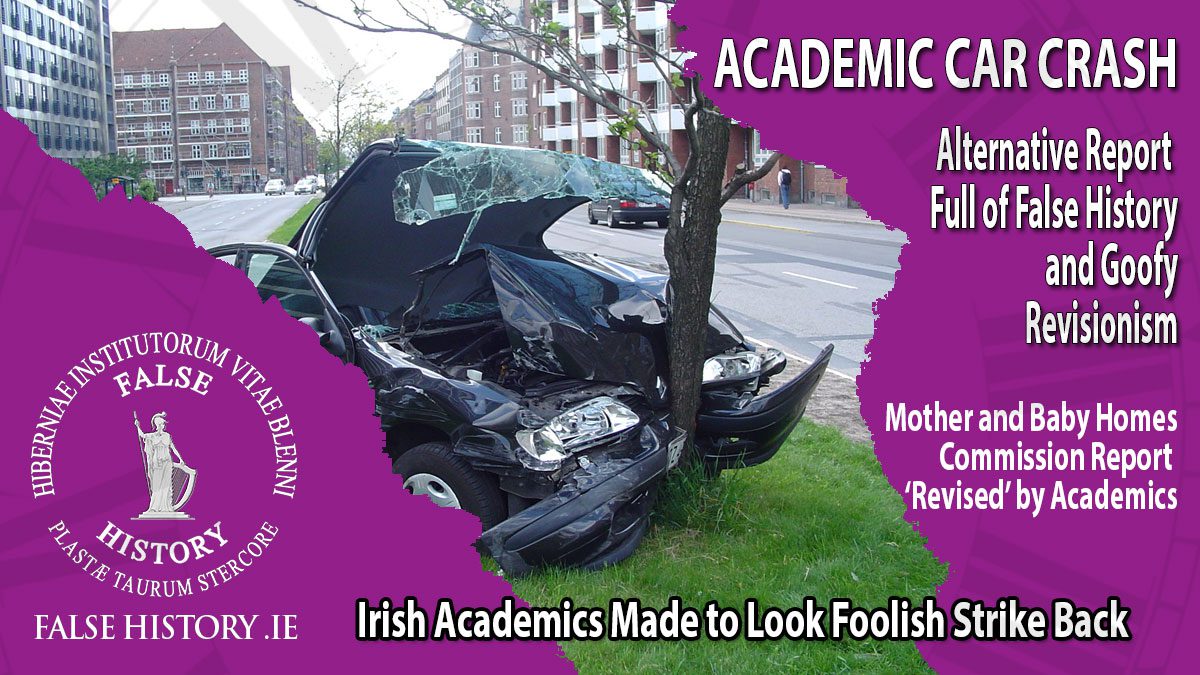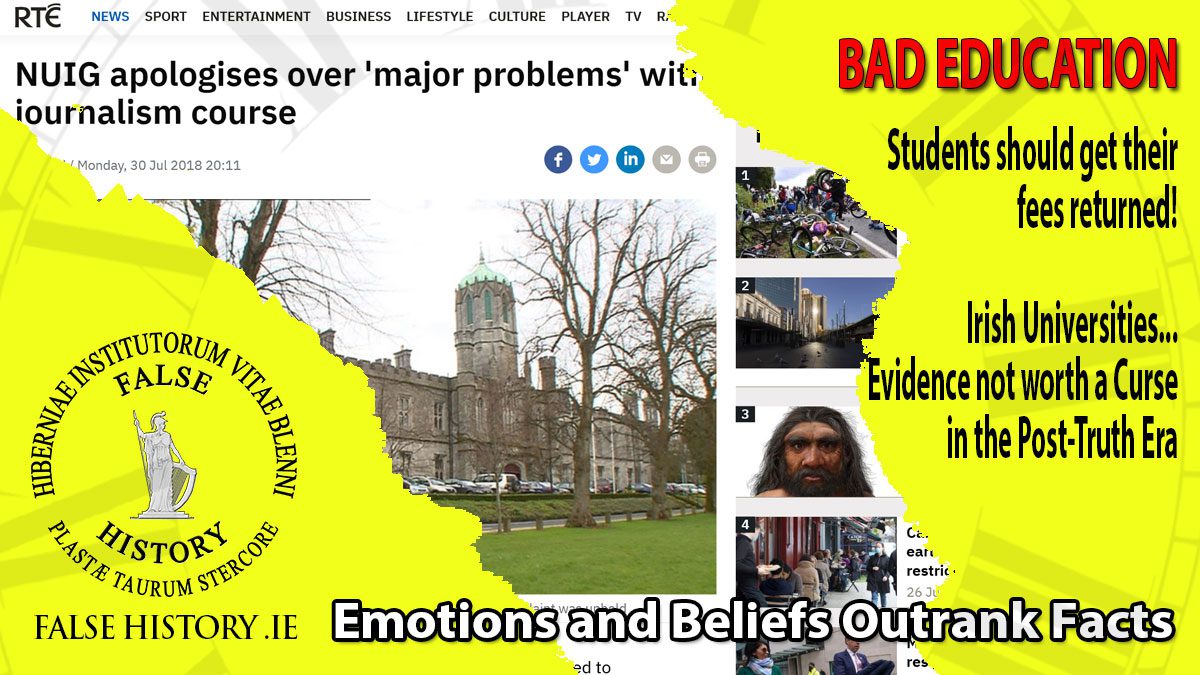Many academics were made to look foolish because the final report of the commission of investigation into mother and baby homes rubbished many of the…
Tag: nui galway
Post-Truth Era Afflicts Irish Universities
The Post-Truth Era hit Ireland earlier than most other nations. Women’s studies at the universities provided a fertile breeding ground for false histories. In no…
Critical Thinking Skills Absent at Galway University
IT IS THE YOUNG WHO BELIEVE US This headline was probably the most significant comment made during a Zoom presentation hosted by An Cumann Staire,…


